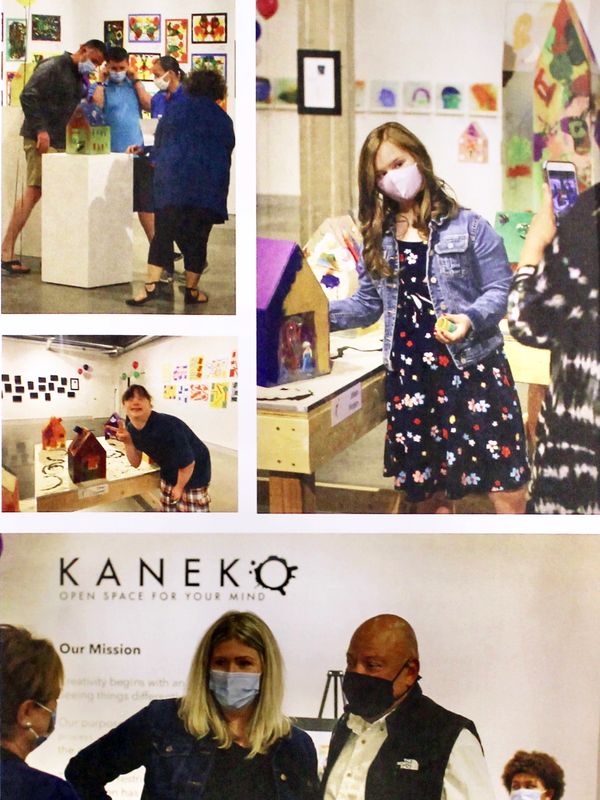What works for US!

Collaborating
- Our program is only possible through collaboration
- We ask Special Education teachers for input on students' abilities and needs
-We work with our school's occupational therapists
- We brainstorm with ALL the art teachers in our department developing the lessons, processes and adaptations.
- We value the expertise of guest artists
-We appreciate the opportunity to display our work in public places.

Lesson Planning
- We use the foundations of Discipline Based Art Education.
- We start our plans with an artist or art movement
- We thoroughly plan and brainstorm. Our goal is to expose students to new artists, give them a unique experience and have them make all the choices within their work.
- We develop a process that will work for each student and allow them to express themselves.
- We start the lesson by exploring and critiquing an artist or art movement. After demonstrating the art making process we guide students through their own exploration and expression.

Set up and Cycles
- Students have class once per week.
- We teach our class every day and limit the class to no more than 8 students in a class.
- Two certified teachers teach each class.
- We set up our room according to the project and students' mobility needs.
- Each lesson may last 1-4 weeks.
- We have a 4 year rotation of projects. A student can take the class all 4 years of high school and always experience new lessons.

Support
- Peer models are a great way for students to get support and also meet friends.
- We have nurses, occupational therapists, educational assistants and special education teachers join us.
- Although we love support, students also need their space. We give students time on their own and try not to crowd or hoover.
A GUIDE TO WORKING IN THE ADAPTED ART ROOM
Guide for Teachers and Guest Artists:
Greet every student & staff member that enters the space.
Create a safe and welcoming environment for students, staff, caretakers, and guests. We are all partners in this journey.
Have tables, equipment, supplies, and adapted tools set up and ready for use. You will want full attention on your amazing students.
We have Learned So Much
This is the guide we provide to all our teachers, artists, volunteers, peer models, educational assistants and occupational therapists. We have learned so much from working closely with our amazing students.
Guide for Educational assistants, caretakers and Guests:
Leave your expectations and ideas of what success looks like at the door. For some students success might mean moving their arm, for others it may mean drawing a likeness of the world around them.
Remember it is all about the student creating and expressing their voice and choices.
Read the student’s body language in order to adjust your volume level, and proximity. One adult per student is all that is needed in most cases, otherwise students may become overwhelmed. Often a student may only need a periodic check in from an adult.
Be careful not to suggest things. Such as, “How about put some blue here?”, or “What about drawing a heart?” Suggesting such things creates an expectation and a situation where the student will try to please the adult. Slow down, breathe, listen, and wait for students to make choices.
Do not “fix their work”. This immediately devalues their work and who they are as a human being. Each student will express their ideas in their own way. Parents want to see what their student’s can do, not what the adults in the room can do.
Hand over hand should be only as needed. Such as helping to apply glue, or other technical applications. It is important to keep the integrity of the student’s work as they see it.
Listen carefully to the Art Instructor for cues and instructions. Please do not work ahead or assume what we are expecting. Lessons often change and evolve as we learn what works and what does not.
Strive to build meaningful relationships with each student.
Be actively engaged with the student or students you are assisting. Move with them, avoid stationary positions for long periods of time; be attentive. Sitting next to the student for an extended period of time can create a stagnant environment. Cell phones should be put away unless needed to contact a teacher or in an emergency.
Success is not measured by what a student's work looks like. Success is when a student has a meaningful experience documented by THEIR choices and THEIR movements.